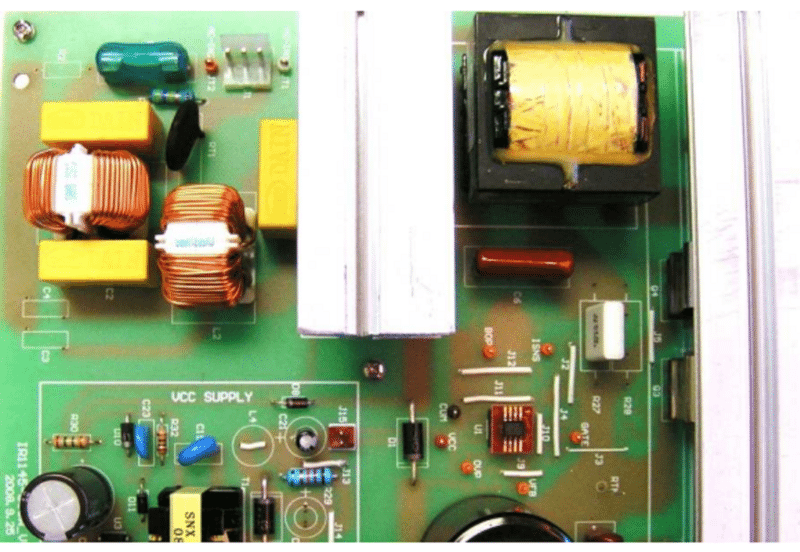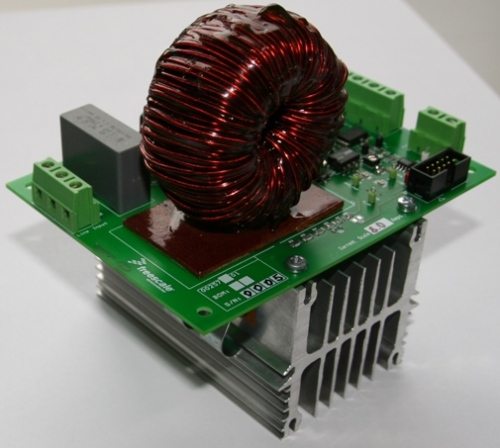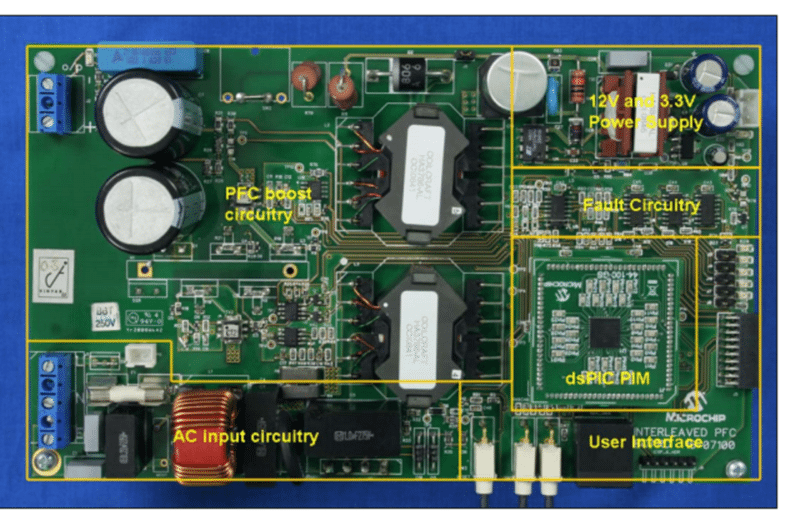An important factor that decides the power quality in an electrical system is Power Factor (PF). Almost all types of mains powered electronic and electrical equipment utilize Power factor correction (PFC) schemes to ensure that these systems can operate at their maximum efficiency. PFC circuits help to minimize inefficient use of power, and as a result decrease operating costs and improve performance.
In the following section, we discuss some ready-to-use reference designs from the industry which demonstrate the design of power factor correction circuits with complete documentation:-
350W PFC Design with CCM:

This reference design can be integrated in a variety of applications that require a high-performance PFC stage at the AC-DC front-end of their designs. The design implements a continuous conduction mode (CCM) boost converter for achieving power factor correction (PFC) with the help of a IR1152 PFC IC from International Rectifier. Designed to be operated from 85-264VAC universal input voltage, the design delivers 350W continuous output power. Using an optimized PCB layout, the design includes several features such as AC line sag, system overcurrent & overvoltage. The design shows less than 10% Total Harmonic Distortion (THD) and EN61000-3-2 Class D standard compliance. Check out more on this Reference Design.
Direct PFC For Motor Control Apps:

This reference design explains a cost-effective direct PFC algorithm. The design implements average current mode control of Power Factor Correction (PFC). Freescale’s MC56F8013 digital signal controller (DSC) is used to implement both fast current and slow voltage loops. The DSC also controls the PFC power switch. The design works from a 230VAC Input voltage and provides a maximal output power of 750W. The solution integrates all required fault protections such as input over-current, input under-voltage, input over-voltage, etc. Check out more on this Reference Design.
Interleaved Power Factor Correction (IPFC) Design:

This reference design is an Interleaved Power Factor Correction (IPFC) converter. This system is implemented with a 16-bit fixed point dsPIC DSC (Digital signal controller). The IPFC converter uses two boost converters, which are parallel coupled and are 180º out of phase current controlled with respect to each other. Apart from hardware design guidelines and MATLAB modeling, this design also explains how to install and configure the IPFC reference board. Check out more on this Reference Design.
Design of 100W PFC:
This reference design is an active power factor correction (PFC) controller for boost PFC application which operates in the critical conduction mode. A design of a 100W output power converter is explained along with a power factor correction (PFC) efficiency of 90%. The design includes schematics, bill of material and theory of operation. Check out more on this Reference Design.

No comments:
Post a Comment